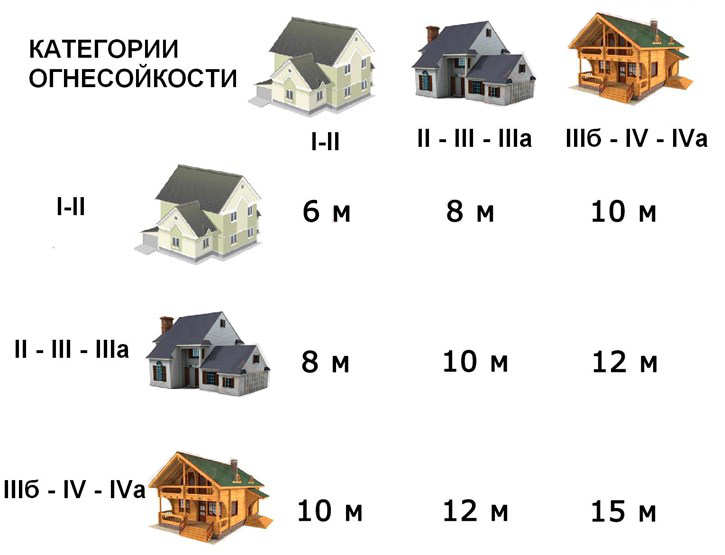Fire breaks between buildings - definition, key factors
A fire gap between buildings is a certain, normalized distance between buildings, which should prevent the spread of fire and localize the fire source. Fire-prevention distances between buildings, structures and structures are regulated by a large number of regulatory documents. The most complete set of rules that builders and designers should follow when planning and erecting country houses intended for permanent or seasonal residence is SP 4-13130.2013. Their use depends on the type of building, the materials it consists of, the purpose of the building and other factors.
Fire resistance of buildings
The key factor that affects the fire distance is the fire resistance of the structure. The fire resistance indicator of any structure is characterized by the invariability of its geometric shapes during a fire, that is, the preservation of the integrity of the building and its structural elements: load-bearing walls, roofs, etc., the lower this indicator, the greater the likelihood of destruction and spread of fire to neighboring buildings, therefore will increase.
The level of fire resistance depends on what materials the structure is made of. The following degrees are distinguished:
I- structures that were erected using natural or artificial stones or reinforced concrete load-bearing structures, non-combustible slabs and sheets as roofing and facing material;
II- the same materials as in clause I, but for load-bearing walls and interfloor floors, it is allowed to use a less fire-resistant material - unprotected metal profiles;
III- in addition to the specified materials, it is allowed to use wooden elements in building structures of various types as internal floors. Provided they are plastering or cladding with low-combustible plate and sheet elements. Additional requirements are imposed on the elements of the roof - impregnation with fire retardants that increase the fire resistance of wood.
IIIa- structures with a metal frame made of an unprotected rolling profile and metal sheet fencing elements;
IIIb- a frame structure erected of wood. All wood used in construction, regardless of the supporting or enclosing structure, has undergone special training and flame retardant impregnation.
IV- a wooden structure made of wood that has not undergone special treatment, but protected by refractory sheet materials as an external cladding.
IVa- one-story frame buildings made of unprotected metal load-bearing structures and profiled sheet fencing elements. but with a combustible insulation between them.
Fire clearances between buildings in backyard plots

Minimum fire-prevention gaps between residential buildings of neighboring plots
The distances between buildings depend on the material from which they are built, the minimum fire distance between two wooden houses is 15 m, while structures built of bricks, concrete or blocks can be no more than 6 m apart.
In this case, the norms must be observed between buildings on the site itself. The most dangerous is a bathhouse or a sauna, since usually this structure is traditionally erected from wood, and an open fire is used for heating. Therefore, the minimum allowable fire-prevention distance between the house and the bathhouse should be at least 10 m, provided that the house belongs to categories I-III, and 15 m. If the house and the bathhouse are built of unprotected wood.






